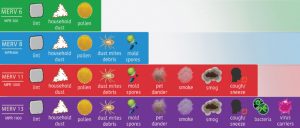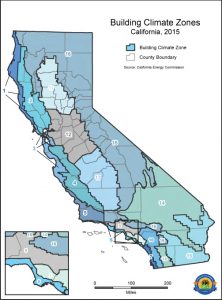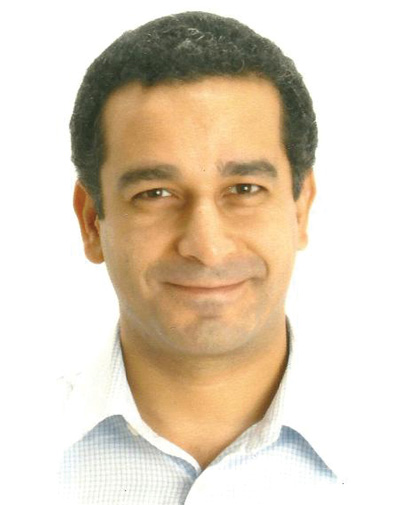— By Ramez Naguib, P.E. —
Effect of air filter rating on energy consumption in restaurants during COVID-19.
This we know: COVID-19 is primarily transmitted from person to person through respiratory droplets, which are then released when someone with COVID-19 sneezes, coughs or talks. Infectious droplets can land in the mouths or noses of people who are nearby or possibly be inhaled into the lungs. Current data do not support long range aerosol transmission of SARS-CoV-2, such as seen with measles or tuberculosis. Short-range inhalation of aerosols is a possibility for COVID-19, as with many respiratory pathogens. However, this cannot easily be distinguished from “droplet” transmission based on epidemiologic patterns. Short-range transmission is a possibility, particularly in inadequately ventilated spaces.

Ramez Naguib, Clima-Tech LLC
Due to this transmission potential, ASHRAE published a guideline for reopening buildings last year that recommended air-conditioning systems have MERV 13 or better filters for recirculated air.1
Though such filters are crucial in the fight against spreading the disease, they impose additional load on the air-conditioning system. The analysis in this article aims at providing restaurant operators with a graphical representation of the additional load that they need to take into consideration when upgrading to higher MERV rating (Figure 1).
The Simulation Model

Figure 1.
To simulate this effect, the Quick Service Restaurant model from the DOE Commercial Building Benchmark Models was used.2 The energy analysis was done using the latest publicly available version of EnergyPlus (9.4.0) which was also developed by the DOE and the National Renewable Energy Laboratory (NREL).3
A total of 16 different California climate zones were modeled, covering the entire range of the state’s microclimate conditions as shown in Figure 2.

Figure 2.
Three different occupancy scenarios were used: Full Occupancy (100%), Half Occupancy (50%) and Quarter Occupancy (25%).
The data was captured for 365 days a year, 24 hours a day and in 10 minutes intervals each hour, for 16 climate zones with three occupancy options: a total of more than 2.5 million simulations.
In each simulation, the energy consumption for the cooling and ventilation systems was captured.
As expected, the analysis clearly illustrates that the HVAC energy consumption is projected to increase with higher MERV rating even under reduced occupancy.
An important point here, though, is that the change in energy consumption is not linearly proportional with the change in MERV rating nor the occupancy. For example, when dropping the capacity by 50%, while increasing the MERV rating, the energy consumption went down by an average of 5% only. Dropping down to quarter capacity with 25% occupancy resulted in an average of only 8% reduction in the energy consumption.
Looking Ahead
We don’t need to dwell on the impact of COVID-19 on the restaurant industry. As of September 2020, up to 20% of total restaurant units in the U.S. had closed. Although this leaves more demand up for grabs for the remaining operators, survivors face a much-changed landscape. We are now seeing some normalization of sales, with the quick-service restaurant segment, in particular, showing positive same-store sales growth.4
A recent McKinsey analysis concluded that, to achieve post-COVID-19 growth, most restaurants will need a redesign.5 The analysis outlined in this article emphasizes the importance of taking the overall effect of the air filtration system in this redesign for a successful post-COVD safe and profitable growth.
SOURCES:
1 “Guidance for reopening buildings.”, ASHRAE, October 5, 2020. https://www.ashrae.org/file%20library/technical%20resources/covid-19/guidance-for-re-opening-buildings.pdf
2 Torcellini, P. et al. (2008). DOE Commercial Building Benchmark Models. National Renewable Energy Laboratory. https://www.energycodes.gov/development/commercial/prototype_models
3 EnergyPlus, U.S. Department of Energy’s (DOE) Building Technologies Office (BTO) and National Renewable Energy Laboratory (NREL). https://energyplus.net/
4 Bolden, D. et al. (2020). The $100 Billion Digital Lifeline for Restaurants. Boston Consulting Group. https://www.bcg.com/publications/2020/how-digital-capabilities-help-restaurants-thrive-through-pandemic
5 Haas, S. et al. (2020). How restaurants can thrive in the next normal. McKinsey & Company. https://www.mckinsey.com/industries/retail/our-insights/how-restaurants-can-thrive-in-the-next-normal
— Ramez Naguib, P.E., LEED AP, CEM, PMP is the president and CEO of Clima-Tech LLC in Los Angeles. He has worked on some of the largest refrigeration, central cooling and heating projects domestically and internationally. He has several published papers on various engineering, economic and management topics. He can be reached at [email protected].

